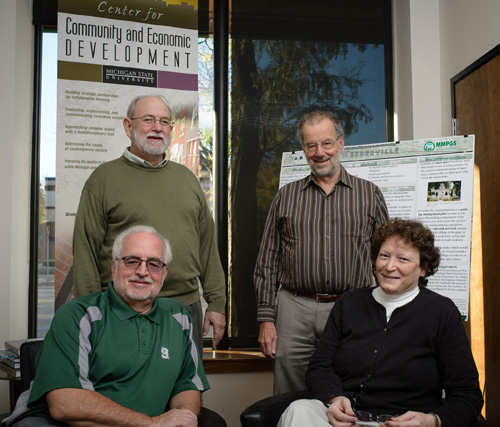Good news for parents: Those piano lessons or random toy parts littering your floors may one day lead to the next scientific breakthrough.
That’s according to new Michigan State University research linking childhood participation in arts and crafts activities to patents generated and businesses launched as adults.
In the study, which is published in the most recent edition of the journal Economic Development Quarterly, the researchers defined “childhood” as up to 14 years old.
The team of multidisciplinary researchers studied a group of MSU Honors College graduates from 1990 to 1995 who majored in science, technology, engineering or mathematics, or STEM. They found of that group, those who own businesses or patents received up to eight times more exposure to the arts as children than the general public.
“The most interesting finding was the importance of sustained participation in those activities,” said Rex LaMore, director of MSU’s Center for Community and Economic Development. “If you started as a young child and continued in your adult years, you’re more likely to be an inventor as measured by the number of patents generated, businesses formed or articles published. And that was something we were surprised to discover.”

MSU researchers have found a link between childhood participation in arts and crafts activities to patents and businesses owned in adulthood. Back row: James Lawton (left) and John Schweitzer. Front row: Rex LaMore and Eileen Roraback. Photo by G.L. Kohuth
Musical training seems to be important. The researchers found 93 percent of the STEM graduates reported musical training at some point in their lives, as compared to only 34 percent of average adults, as reported by the National Endowment for the Arts. The STEM graduates also reported higher-than-average involvement in the visual arts, acting, dance and creative writing.
In addition, those who had been exposed to metal work and electronics during childhood were 42 percent more likely to own a patent than those without exposure, while those involved in architecture were 87.5 percent more likely to form a company. And children with a photography background were 30 percent more likely to have a patent.
Why?
Such activity fosters out-of-the-box thinking, the researchers said. In fact, the group reported using artistic skills – such as analogies, playing, intuition and imagination – to solve complex problems.
“The skills you learn from taking things apart and putting them back together translate into how you look at a product and how it can be improved,” said Eileen Roraback, of MSU’s Center for Integrative Studies in the Arts and Humanities. “And there’s creative writing. In our study, a biologist working in the cancer field, who created a business, said her writing skills helped her to write business plans and win competitions.”

A child who paints has a greater chance of owning a patent or business when he or she grows up, according to new Michigan State University research. Photo by G.L. Kohuth
The results of the study could be crucial to rebuilding the U.S. economy, the researchers said.
“Inventors are more likely to create high-growth, high-paying jobs in our state, and that’s the kind of target we think we should be looking for,” LaMore said. “So we better think about how we support artistic capacity, as well as science and math activity, so that we have these outcomes.”
In addition to LaMore and Roraback, the research team included Robert Root-Bernstein, professor of physiology; John Schweitzer, professor in the Center for Community and Economic Development; James Lawton, professor of sculpture; two undergraduate students and one graduate student.
*Source: Michigan State University
